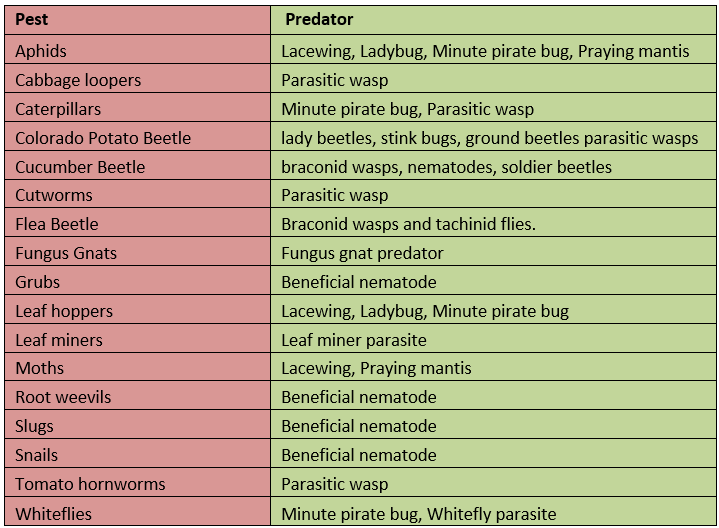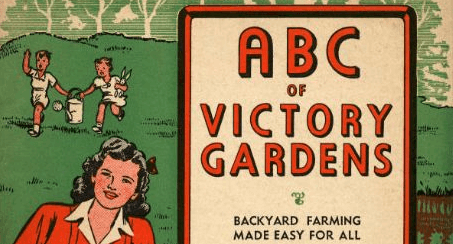The Victory Garden- Dealing with Pests and Encouraging Beneficial Insects and Pollinators
You are moving along on the path to food independence, and hopefully by putting into practice all of the steps we have discussed thus far, you are not experiencing too many pest problems but let’s be honest, no garden makes it through the season without a single bad bug.
Here at the Garden Center we encourage the use of natural practices to deal with harmful bugs whenever possible. First and foremost we encourage prevention which includes attracting beneficial insects to take on the battle against the bad guys. So who are these evil doers and who are the soldiers that attack them? Below is a list of the most common pests that can decimate a vegetable garden, along with the good bugs that will keep them under control.

Aside from keeping your soil as healthy as possible, there are other ways to entice the good guys into your garden space.
- Plant a wide variety of annuals and perennials around your vegetable plot that flower at different times during the season. This keeps an ongoing supply of pollen and nectar available to keep them in the area.
- Keep a water source near the garden such as a birdbath. It not only keeps the birds happy (another natural predator of bad bugs) but also attracts beneficial insects.
But if you are struggling with a bigger pest problem, another option is to order beneficial insects through the mail in large quantities. If you have their water and food source in place, it will encourage them to stay in the area once released into the garden.
The other benefit to adding a food and water source near your garden is to attract pollinators. Bees, butterflies and hummingbirds are a few pollinators that are the workhorse behind keeping those flowering fruits and vegetables in great supply!
There is also another way to deal with garden pests. Row cover!
This is a gossamer light fabric that floats over top of your plants, and is secured in the ground with a few pins. It lets sun and water in but keeps pests out, including deer and rabbits! The lightness of the fabric also keeps plants from being weighed down. The key to using row cover effectively is to place it over your plants as soon as they go in the ground, before pests know that they’re there. Another benefit of row cover is that it can help prevent sun scorch and can raise or lower the temperature of the soil by about 5 degrees. Don’t confuse row cover with frost cloth however. Frost cloth is made of a much heavier fabric that doesn’t let much light and water through.
There is one negative side to row cover. In keeping out the bad bugs you are also keeping out the good. Plants that are not self pollinating may struggle to produce. One solution is to remove the row cover for a few hours in the morning or late afternoon to let pollinators do their job.
Pheromone Traps and sticky traps are also wonderful at drawing in harmful insects and can also be a visually clue as to which pests are prevalent in your garden.
There may be instances where your only solution is to treat your plants with a spray etc, to solve a pest problem. Again, we prefer to use the most natural methods possible and thankfully, there are several very good organic options.
Treatments with Neem Oil, BT, Diatomaceous earth, and insecticidal soap are good options for different types of pests, but use them as a targeted solution with care as they can also harm beneficials.
Last but not least don’t forget the beer and duct tape! No, that’s not a misprint…
Slugs LOVE beer as much as they love your leafy greens. Place a few jar lids filled with beer among your plants, slugs will belly up to the bar and expire. Duct tape is a great solution to remove the eggs of harmful insects that are laid on the backs of leaves. Simply wrap a strip of duct tape backward around your hand and press it against the eggs on the back of the leaf. The eggs will stick to the tape and you can toss it in the trash. Just be sure to identify the eggs you’re removing, you don’t want to harm any beneficial babies! Get the kids involved in this one, they’ll love it!
Now that we’ve hopefully dealt with any pest problems we can attack the next enemy…WEEDS! Stay tuned!

